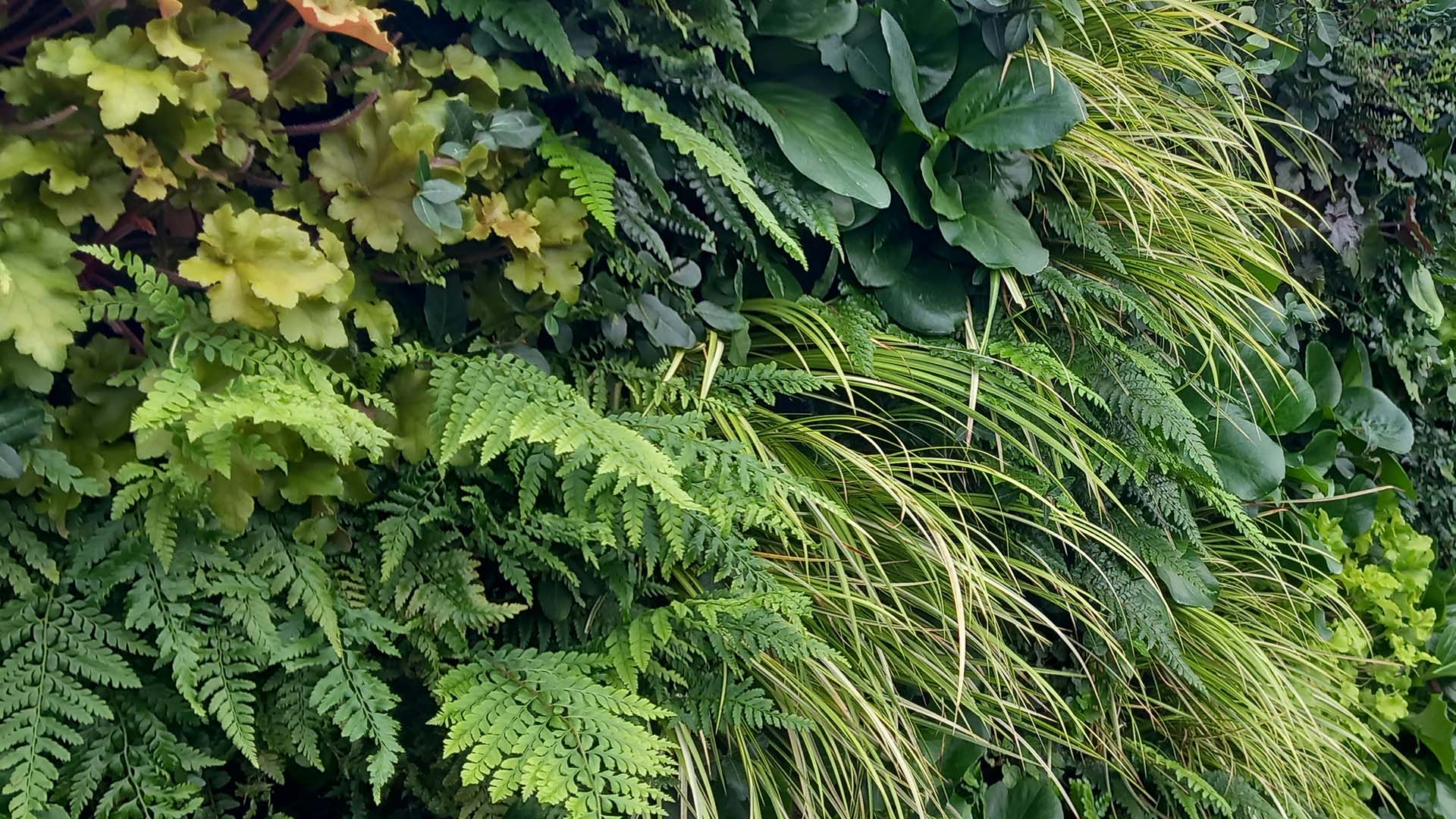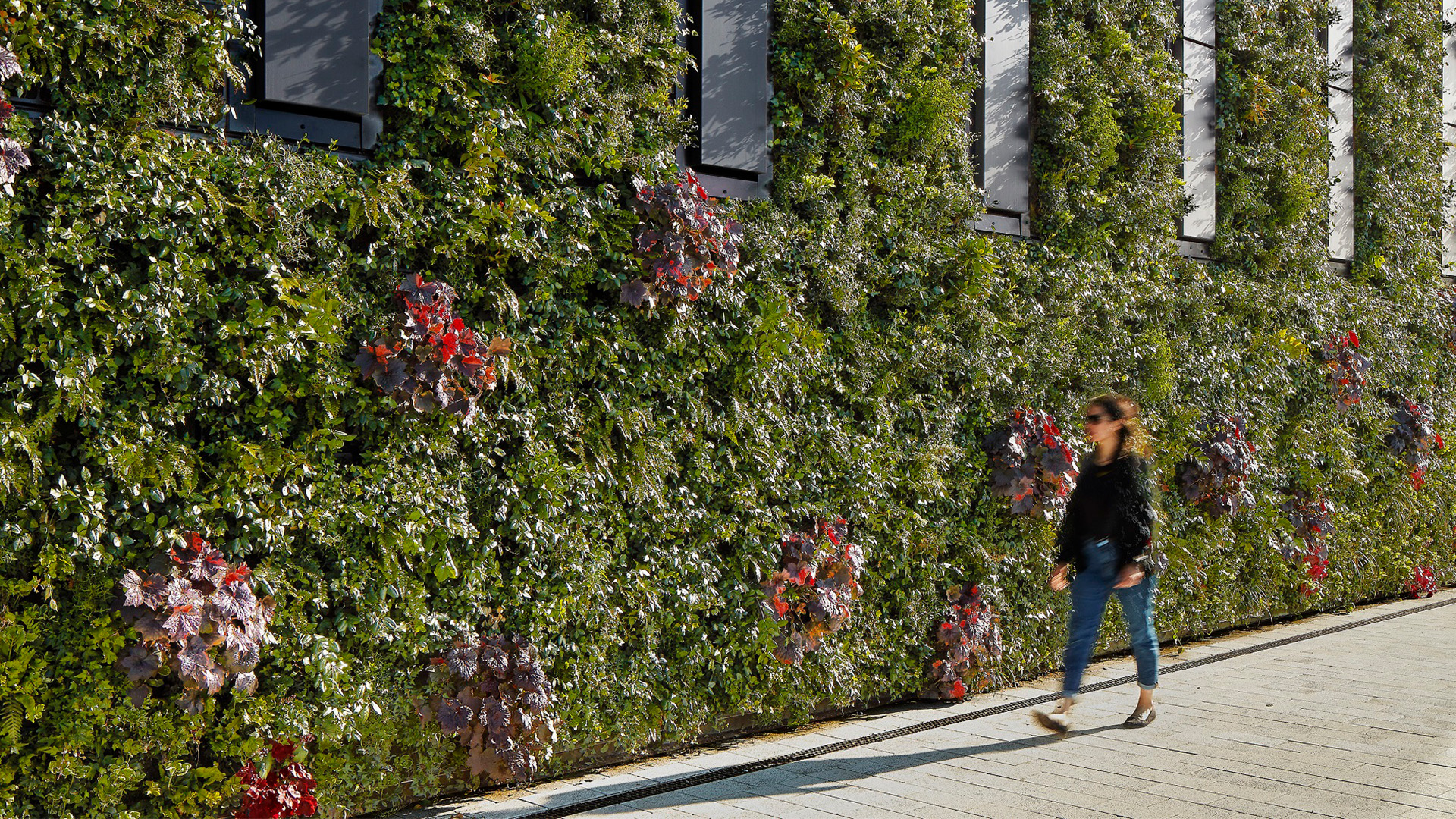
Living wall benefits
Benefits for people, planet and business.
Greener cities for a healthier future
Bringing nature into our cities is a vital component for a sustainable future. Our connection to the natural world is often overlooked in this increasingly urban world.
Green infrastructure such as green walls, green roofs and pocket parks, can be targeted to bring plants to the very places where we need them and where they can add value.
Living walls are proven to help to reduce air pollution, boost biodiversity and improve health and well-being. No other cladding system can do all this.

Better well-being
We have an innate connection to nature which is often overlooked in an increasingly urbanised world. Multiple studies show that exposure to greenery reduces stress, lowers blood pressure, boosts mood and improves cognitive function.
In a workplace setting this can lead to better staff satisfaction and lower staff turnover.
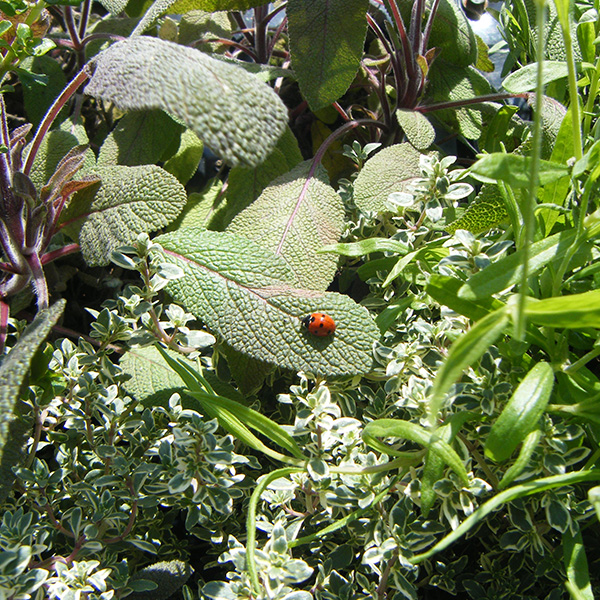
Greater biodiversity
A recent RHS study found that the more vegetation a living wall has, the more invertebrates it attracts, with diverse plant mixes offering even greater benefits. Typically, a single living wall contains at least 10–15 different evergreen and flowering plant species, creating a thriving habitat for pollinators.
By integrating living walls into city landscapes, we contribute to a wider network of green spaces. To further enhance biodiversity, we can also incorporate bee and invertebrate boxes, providing essential shelter for wildlife.
Living walls can help meet Biodiversity Net Gain calculations depending on the starting score.
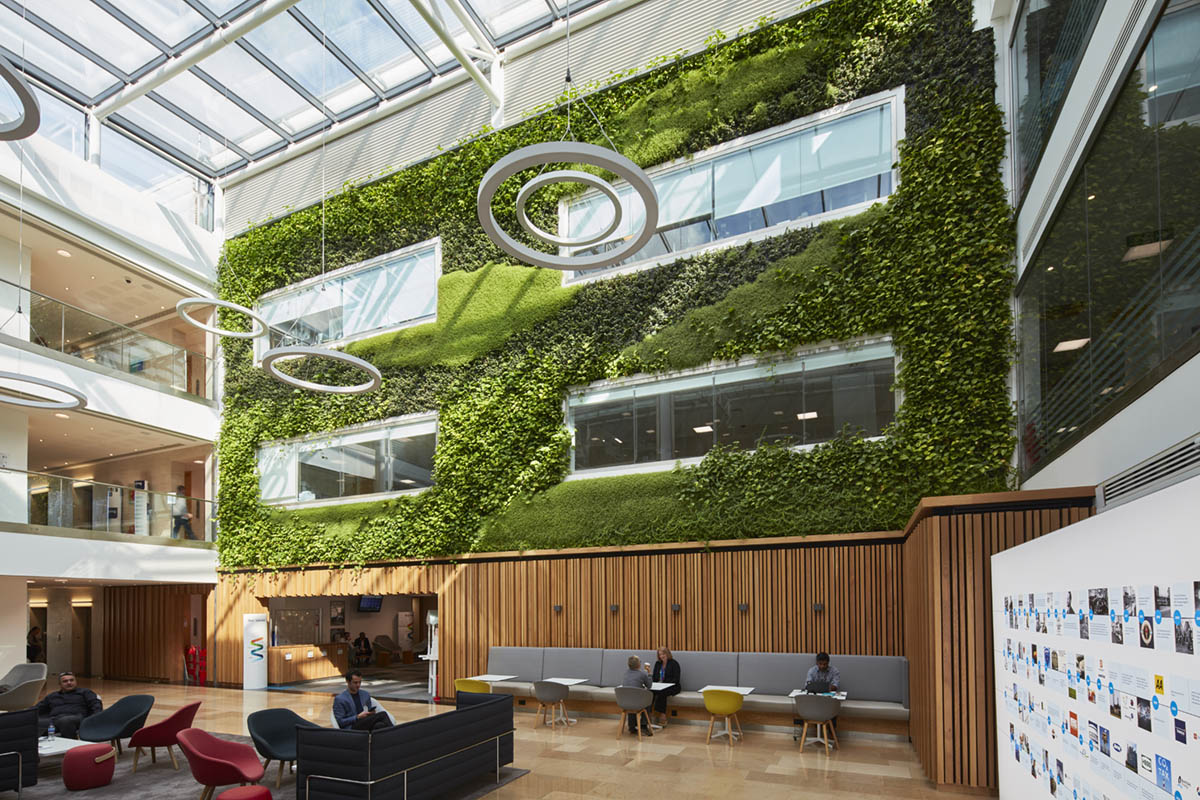
Better workplace satisfaction
Living walls help create a more engaging and biophilic environment.
The Human Spaces report (2015) found that employees working in environments with natural elements, such as greenery and sunlight, reported a 15% higher level of well-being, were 6% more productive, and 15% more creative than those in environments lacking nature. Similarly, research by Nieuwenhuis et al. (2014) demonstrated that office greenery could increase productivity by 15% and improve employee satisfaction. These positive effects contribute to higher morale and a greater sense of connection to the workplace, which are key factors in reducing turnover.
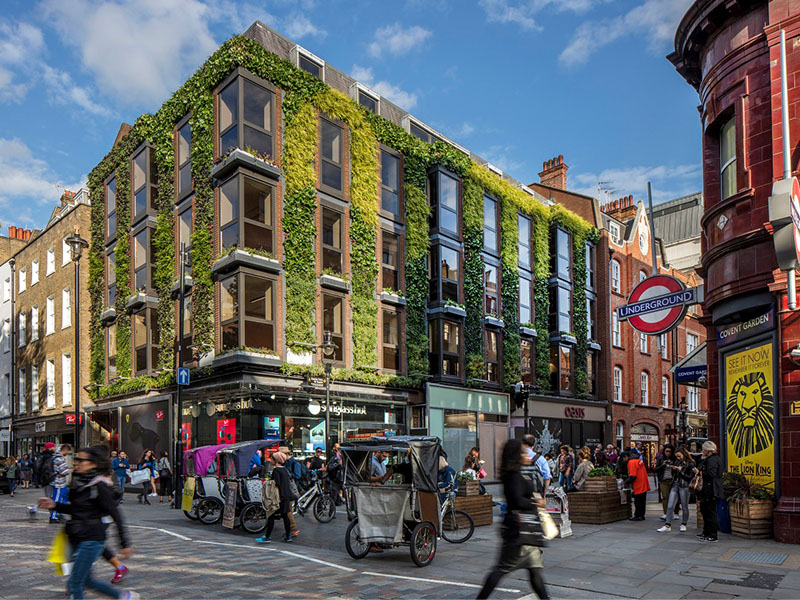
Green transformations
Living walls are ideal for retrofit projects, helping to quickly transform tired facades or walls.

Space saving greenery
In cities and urban areas space is literally and financially at a premium. Installing a living wall is a space saving way to get the benefits of greenery without sacrificing valuable floor space.
They create beautiful backdrops for internal or external spaces such as public realm, offices and retail areas.
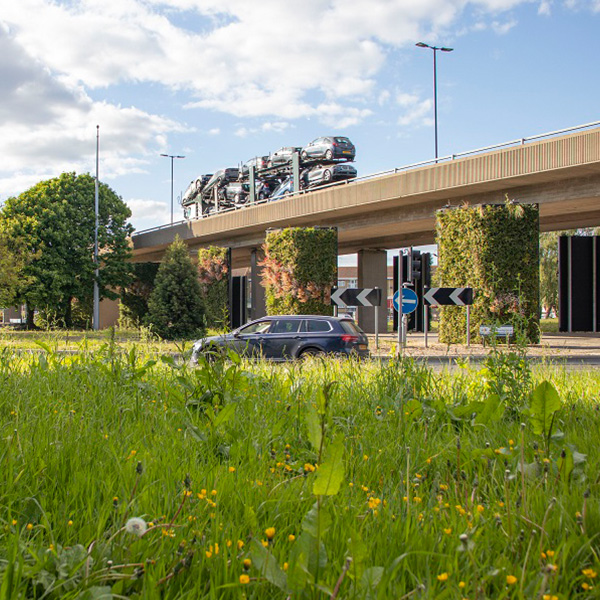
Reduced air pollution
According to Defra, air quality is the largest environmental health risk in the UK. (Defra Clean Air Strategy, 2019). During photosynthesis, plants absorb CO2 and other gases like oxides of sulphur and nitrogen (SO2 and NOx), ozone (O) and airborne ammonia (NH3) through their stomata. Plants also reduce air pollution by intercepting suspended particulate matters (SPM) and aerosols and retaining them on the leaf surface.
In densely populated areas of high-rise development like central London pollutants can become trapped in ‘urban street canyons’.
A study carried out in 2012 showed that ‘planting of vegetation in street canyons can reduce street-level concentrations of Nitrogen Oxide by as much as 40% and Particulate Matter by up to 60%’. (Pugh, MacKenzie, Whyatt and Hewit, 2012)

Cleaner indoor air
Measurable Indoor Air Quality (IAQ) is a key indicator of the health and wellbeing of our indoor spaces. Plants help remove VOCs from the air and reduce CO2 levels, leading to fewer headaches.
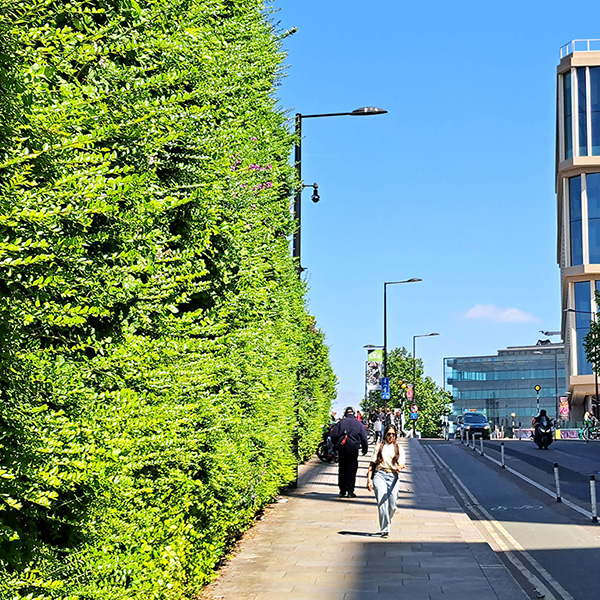
Cooler streets
Anyone spending time in a large city during summer will know that urban areas are often hotter than rural ones.
Buildings, roads, and pavements absorb heat during the day, which is released at night. Cities also produce more air pollution, which can trap heat within the city, exacerbating the impact of heatwaves.
A living wall can cool the surrounding area by reducing the amount of heat buildings absorb and by releasing moisture into the air, helping to create a more comfortable microclimate.
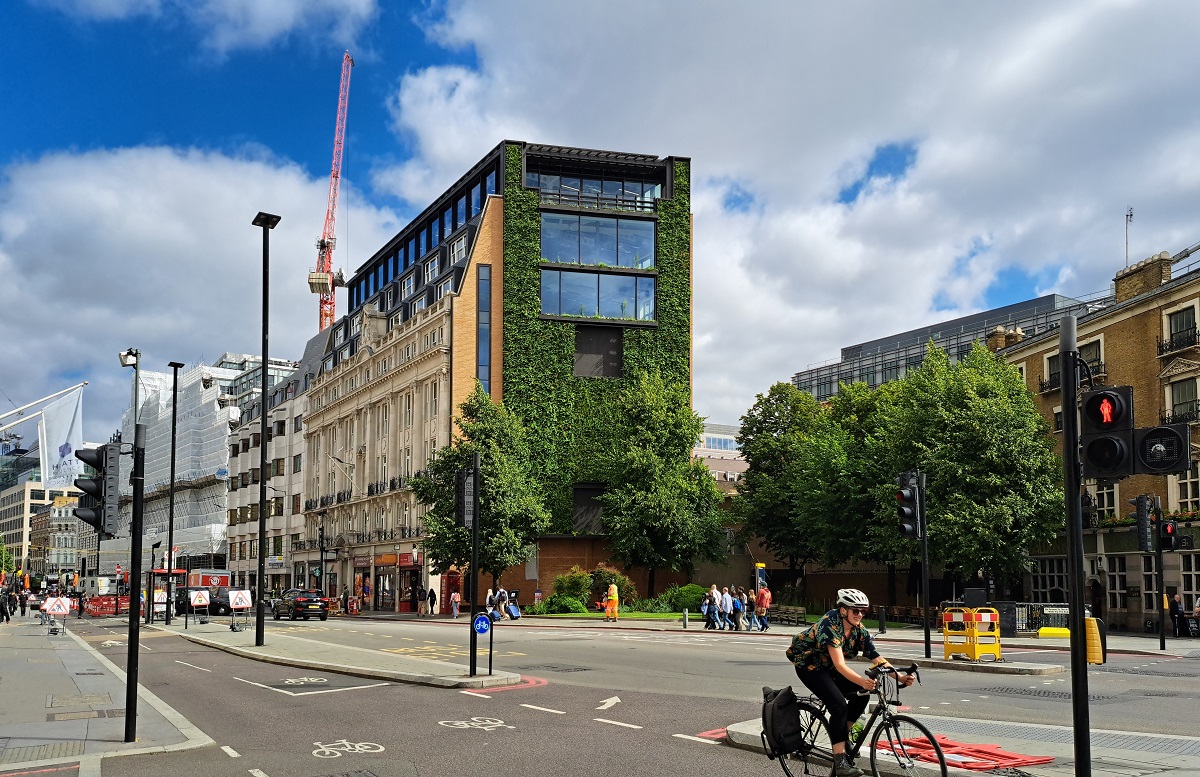
Improved insulation
Green walls provide additional insulation helping to keep buildings cool in summer and warm in winter. In turn this reduces the need for mechanical heating and cooling.
A research team at the University of Plymouth covered a section of their 1970s building in living wall. They found that temperatures inside the covered section remained more stable than the exposed area and that 31.4% less heat was lost compared to the bare wall.
A University of Nottingham Study showed an average 2.5 degree reduction in internal temperature behind a section of living wall, showing that living walls can help keep spaces cool in summer.
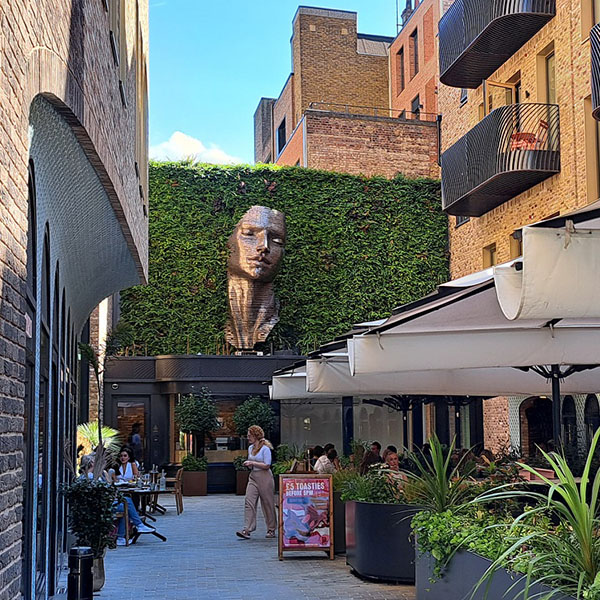
Noise reduction
Living walls reduce noise by absorbing, deflecting and diffusing sound waves. The greater the volume of foliage the greater the sound reduction. Biotecture’s BioPanel living wall system has been fully tested and certified as a class ‘C’ acoustics material and can therefore be included as part of the acoustic strategy of a space.


